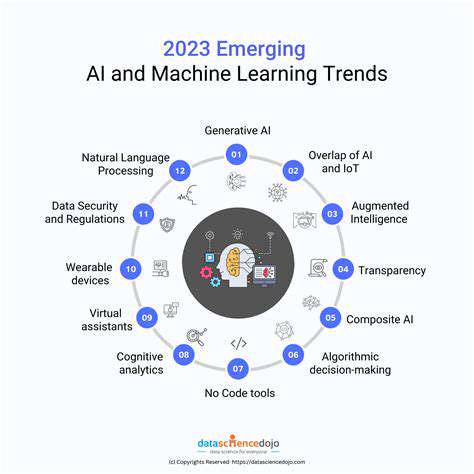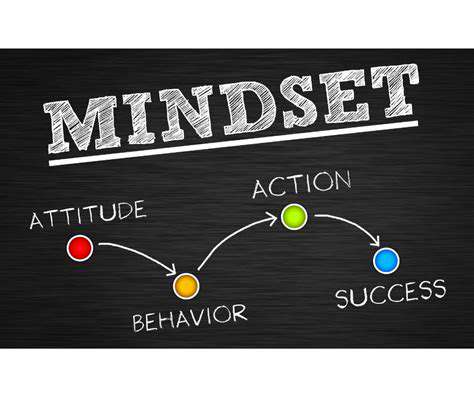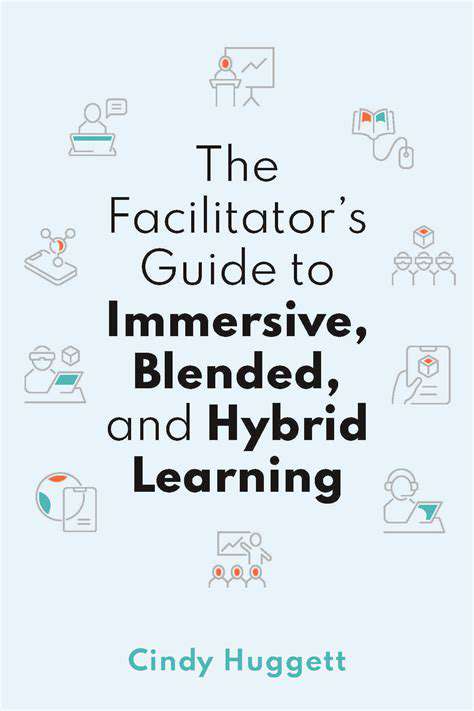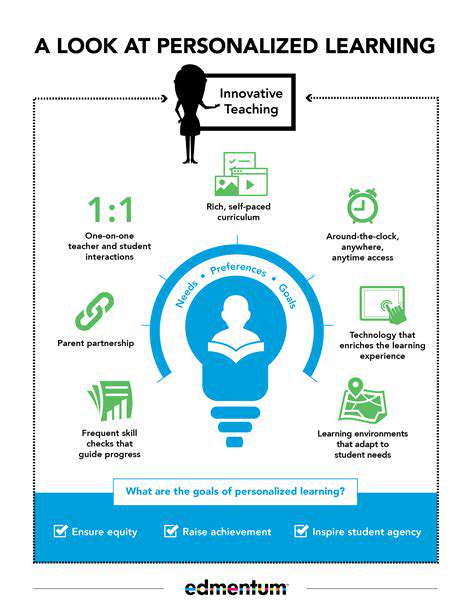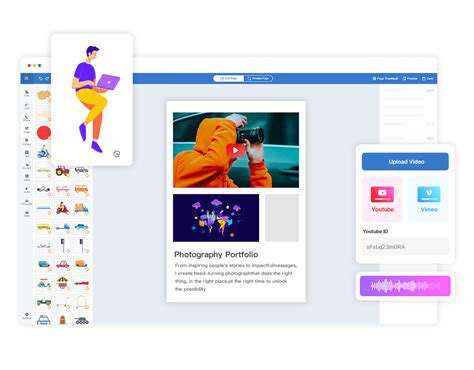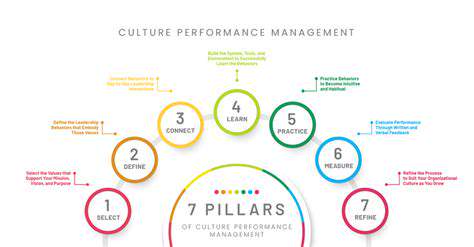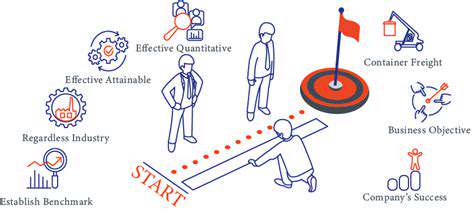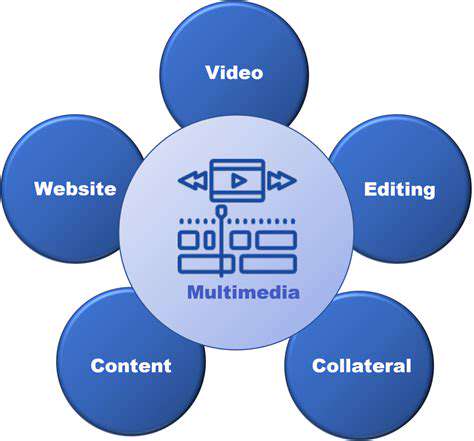Gamification in Education: Making Learning Addictive

Enhancing Motivation Through Gamification
Gamification, at its core, is about leveraging game mechanics to enhance engagement and motivation in non-game contexts. By incorporating elements like points, badges, leaderboards, and challenges, organizations and educators can transform mundane tasks into more enjoyable and rewarding experiences. This increased engagement often leads to improved performance and a more positive attitude towards the task at hand. This fundamental principle is crucial for successful implementation.
A key aspect of effective gamification is tailoring the game mechanics to the specific needs and characteristics of the target audience. Understanding the motivations and preferences of learners or employees is essential for creating a truly engaging experience. Simply applying generic game mechanics without considering the context can diminish the desired impact.
Designing Engaging Experiences
Beyond basic points and leaderboards, a successful gamification strategy involves crafting truly engaging experiences. This requires careful consideration of the narrative, the level of challenge, and the rewards structure. A compelling narrative can immerse participants in the activity, fostering a sense of purpose and ownership. Creating well-defined progression systems, with appropriate challenges and rewards, keeps the game engaging over time.
Effective gamification also needs to consider the social aspect. Incorporating teamwork, collaboration, and friendly competition can foster a supportive environment and create a strong sense of community. This social element is often overlooked, yet it can significantly enhance the overall impact of the gamified experience.
Measuring Impact and Iteration
Implementing gamification isn't a one-and-done process. It requires ongoing evaluation and adjustment based on the feedback from participants. Collecting data on engagement metrics, such as playtime, completion rates, and user feedback, is essential for understanding the effectiveness of the implemented mechanics. Regularly analyzing this data allows for continuous refinement and optimization of the gamified experience, leading to greater impact over time.
This iterative process is crucial for maximizing the benefits of gamification. By constantly monitoring and adjusting the strategy based on user responses, organizations can ensure that the gamified system remains relevant, engaging, and effective in achieving its desired objectives.
Addressing Potential Challenges
Implementing gamification strategies can present certain challenges. One significant concern is the potential for game mechanics to overshadow the core learning or work objectives. Careful design and implementation are essential to ensure that the gamified elements support, rather than detract from, the primary goals. Maintaining a balance between entertainment and productivity is crucial for the long-term success of a gamified system.
Another potential hurdle is the potential for players to become overly focused on the game mechanics, potentially neglecting the core tasks. This could be mitigated by careful design and clear communication of the intended learning or work outcomes.
Beyond Employee Training: Real-World Applications
The principles of gamification extend far beyond employee training and educational settings. It can be successfully applied to a wide range of industries and contexts, such as customer service, marketing, and even healthcare. By integrating game mechanics, companies can drive customer engagement, improve efficiency, and enhance overall satisfaction.
Imagine using gamification to improve customer retention, motivate sales teams, or even encourage healthier lifestyle choices. The possibilities are vast and continue to expand as the field evolves. Understanding these broader applications is key to maximizing the potential of gamification.
The Impact on Knowledge Retention and Skill Development

The Role of Active Recall
Active recall, a learning technique that involves retrieving information from memory rather than passively rereading it, significantly impacts knowledge retention. This process strengthens neural pathways associated with the material, making it easier to access and apply the information later. Engaging in active recall exercises, such as flashcards or practice quizzes, forces the brain to work harder to retrieve information, resulting in a more robust and durable memory trace. This active retrieval process is crucial for long-term learning and retention, as opposed to simply passively absorbing information.
Studies have shown that active recall methods outperform passive learning strategies in terms of knowledge retention. This difference in effectiveness highlights the importance of actively engaging with the material to solidify learning and improve recall. Repeated retrieval practice further strengthens these connections, leading to a more profound and lasting understanding.
The Power of Spaced Repetition
Spaced repetition is a learning technique that involves revisiting material at increasing intervals. This strategy takes advantage of the brain's natural ability to consolidate memories over time. By reviewing information at gradually longer intervals, the brain reinforces the learned material, making it more accessible and resistant to forgetting. This deliberate spacing of reviews encourages the brain to actively work to retrieve the information, further solidifying its place in long-term memory.
Implementing spaced repetition systems, whether through digital tools or physical flashcards, allows for effective knowledge retention. The brain works harder to retrieve information during these spaced reviews, leading to a more robust and lasting memory trace. This gradual review approach is a key component in maximizing knowledge retention across various subjects and learning styles.
The Importance of Meaningful Learning
Meaningful learning, as opposed to rote memorization, plays a vital role in knowledge retention. Connecting new information to existing knowledge structures and personal experiences helps to create a richer and more meaningful understanding. This process of linking new information to prior knowledge reinforces the connections in memory, making the material more accessible and easier to retrieve. This approach creates a more durable memory trace by embedding the information within a broader network of related concepts.
When learners actively create connections between new information and existing knowledge, they are more likely to retain the information over the long term. This approach fosters a deeper understanding and a more profound connection to the subject matter. This type of learning is more engaging and leads to a more sustainable and durable learning experience.
The Future of Gamification in Education

The Rise of Personalized Learning Experiences
Gamification is rapidly evolving, moving beyond simple point-based systems to incorporate intricate personalized learning pathways. This shift allows educational institutions to tailor the learning experience to individual student needs and learning styles. By recognizing and addressing diverse learning preferences, gamified platforms can create a more engaging and effective learning environment for all students. This personalization not only enhances understanding but also fosters a deeper connection with the material, ultimately improving retention and application.
Innovative gamified platforms are now capable of adapting in real-time to a student's performance. For example, if a student struggles with a particular concept, the game will dynamically adjust the difficulty or provide additional resources to support their understanding. This proactive approach to learning significantly improves student outcomes.
Integrating Gamification Across Disciplines
Gamification is no longer confined to specific subjects. Educational institutions are increasingly recognizing the potential of gamified learning environments to enhance engagement and knowledge acquisition in a wide range of disciplines, from STEM to humanities. This broader integration unlocks opportunities for students to explore different subjects in a fun and interactive way, fostering a deeper understanding and appreciation of various fields of study. For instance, history lessons can be transformed into immersive simulations, while mathematics can be taught through strategic games and puzzles.
The Role of Immersive Technologies
The integration of immersive technologies like virtual reality (VR) and augmented reality (AR) with gamified learning experiences is transforming how students interact with educational content. VR and AR provide rich, interactive environments that enable students to visualize complex concepts and engage with them in a way that traditional methods cannot replicate. This is particularly valuable in fields like science, engineering, and medicine, where hands-on, real-world simulations are crucial to comprehension.
Students can explore virtual anatomy labs, participate in historical reenactments, or design virtual cities, all while receiving immediate feedback and support. These immersive experiences not only enhance engagement but also foster critical thinking and problem-solving skills.
Leveraging Data for Enhanced Learning
Gamified learning platforms generate vast amounts of data about student performance, engagement, and preferences. This data can be leveraged to further refine and personalize learning experiences. Analyzing this data provides invaluable insights into student strengths and weaknesses, allowing educators to identify areas where students need additional support. It also allows for the creation of adaptive learning paths, ensuring that each student receives the most effective and personalized instruction.
This data-driven approach is crucial to creating truly effective and impactful learning environments, leading to improved student outcomes and a more engaging and efficient educational system.
The Future of Gamification in Teacher Training
Gamification's potential extends beyond student learning; it can also revolutionize teacher training. Interactive simulations and game-based scenarios can provide educators with practical experience and opportunities for skill development in a safe and engaging environment. This can lead to more confident and competent teachers who are better equipped to engage students and facilitate a more effective learning process. For example, educators can practice conflict resolution strategies or develop lesson plans within simulated classroom settings using game mechanics.
This approach to professional development is highly engaging and promotes a more practical and impactful learning experience for teachers, ultimately leading to better outcomes for students.
Read more about Gamification in Education: Making Learning Addictive
Hot Recommendations
- The Gamified Parent Teacher Conference: Engaging Stakeholders
- Gamification in Education: Making Learning Irresistibly Fun
- The Future of School Libraries: AI for Personalized Recommendations
- EdTech and the Future of Creative Industries
- Empowering Student Choice: The Core of Personalized Learning
- Building Community in a Hybrid Learning Setting
- VR for Special Education: Tailored Immersive Experiences
- Measuring the True Value of EdTech: Beyond Adoption Rates
- Addressing Digital Divide in AI Educational Access
- Preparing the Workforce for AI Integration in Their Careers
